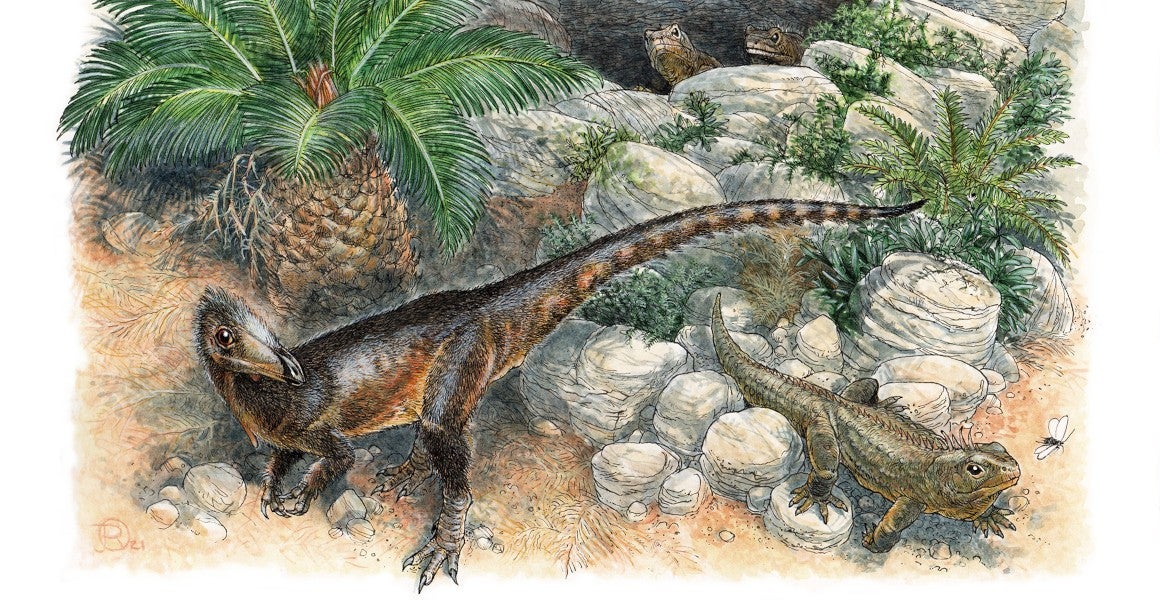New species identified is oldest-known meat-eating dinosaur from UK
These dinosaurs are likely to have had a body size similar to that of a modern-day chicken

Your support helps us to tell the story
From reproductive rights to climate change to Big Tech, The Independent is on the ground when the story is developing. Whether it's investigating the financials of Elon Musk's pro-Trump PAC or producing our latest documentary, 'The A Word', which shines a light on the American women fighting for reproductive rights, we know how important it is to parse out the facts from the messaging.
At such a critical moment in US history, we need reporters on the ground. Your donation allows us to keep sending journalists to speak to both sides of the story.
The Independent is trusted by Americans across the entire political spectrum. And unlike many other quality news outlets, we choose not to lock Americans out of our reporting and analysis with paywalls. We believe quality journalism should be available to everyone, paid for by those who can afford it.
Your support makes all the difference.Scientists have identified the oldest known meat-eating dinosaur from the UK - a chicken-sized animal that would have been one metre long with its tail.
The fossil was named Pendraig milnerae and belongs to a theropod group, which also includes T. rex and modern birds.
Theropod is a carnivorous dinosaur of a group whose members were typically bipedal and ranged from small and delicately built to very large.
Pendraig means chief dragon in Middle Welsh and milnerae honours Dr Angela Milner, who was the Natural History Museum’s (NHM) deputy keeper of palaeontology for more than 30 years. She died on 13 August this year.
Dating back to the Late Triassic period (more than 200 million years ago), the species was first discovered in Pant-y-ffynnon in southern Wales and described in a 1983 thesis.
However, it has now been reclassified as a new species, and the oldest theropod discovered in the UK to date.
The fragmentary fossils of the species consist of specimens from the pelvic region, vertebrae, and an associated left thighbone.
Dr Stephan Spiekman, research fellow at the Natural History Museum and first author on the paper, said: “Pendraig milnerae lived near the beginning of the evolution of the meat-eating dinosaurs.”
“It’s clear from the bones we have that it was a meat-eater, but early in the evolution of this group these animals were quite small, in contrast to the very famous meat-eating dinosaurs like T. rex which evolved much later.”
Dr Susannah Maidment, a senior researcher in paleobiology at the NHM, who worked with Dr Milner, said this paper would not have been possible without her. “I told Angela that I couldn’t find the specimen, and so she went away and about three hours later she had it.
“She found it in a drawer with crocodile material. She must have had the specimen in her mind’s eye from when she had previously looked through that drawer.”
Dr Spiekman added: “The area where these specimens were found was most likely an island during the time period in which it lived.”
“Species which live on islands often tend to become smaller than those on the mainland in a phenomenon called island dwarfism.”
Still, Dr Spiekman said more evidence from more species is needed to investigate the potential for island dwarfism in this area during that time.
The research from the Natural History Museum and the University of Birmingham is published in Royal Society Open Science.
Includes reporting by PA
Join our commenting forum
Join thought-provoking conversations, follow other Independent readers and see their replies
Comments